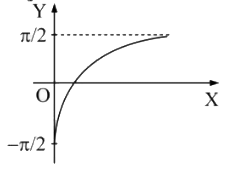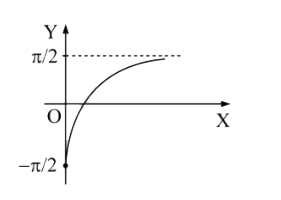f:(−π2,π2)→(−∞,∞) defined by f(x)=tanx is
Video Solution
|
Answer
Step by step video & image solution for f : (-pi/2, pi/2) -> (-oo, oo) defined by f(x) = tan x is by Maths experts to help you in doubts & scoring excellent marks in Class 11 exams.
Updated on:21/07/2023Similar Questions
Knowledge Check
Consider the function f:(−∞,∞)→(−∞,∞) defined by f(x)=x2−ax+1x2+ax+1;0<a<2. Which of the following is true?
Af(x) is decreasing on (-1,1) and has a local minimum at x=1Bf(x) is increasing on (-1,1) and has a local maximum at x=1Cf(x) is increasing on (-1,1) but has neither a local maximum nor a local minimum at x=1Df(x) is decreasing on (-1,1) but has neither a local maximum nor a local minimum at x=1f:(0,∞)→(−π2,π2) be defined as, f(x)=tan−1(logex).
The above function can be classified as :Ainjective but not surjectiveBsurjective but not injectiveCneither injective nor surjectiveDboth injective as well as surjectivef:(0,∞)→(−π2,π2) be defined as, f(x)=tan−1(logex).
The graph of y = f (x) is best represented byA B
B C
C D
D
Consider the function f:(−∞,∞)→(−∞,∞) defined by f(x)=x2−ax+1x2+ax+1;0<a<2. Which of the following is true ?
View Solutionf:(−∞,∞)→(−∞,∞) defined by f(x)=|x| is
View Solutionf:(0,∞)→(0,∞) defined by f(x)=x2 is
View Solutionf:(−∞,∞)→(−∞,∞) defined by f(x)=x3
View Solutionf:(0,∞)→(−π2,π2) be defined as, f(x)=tan−1(logex).
The above function can be classified as :
View Solution
